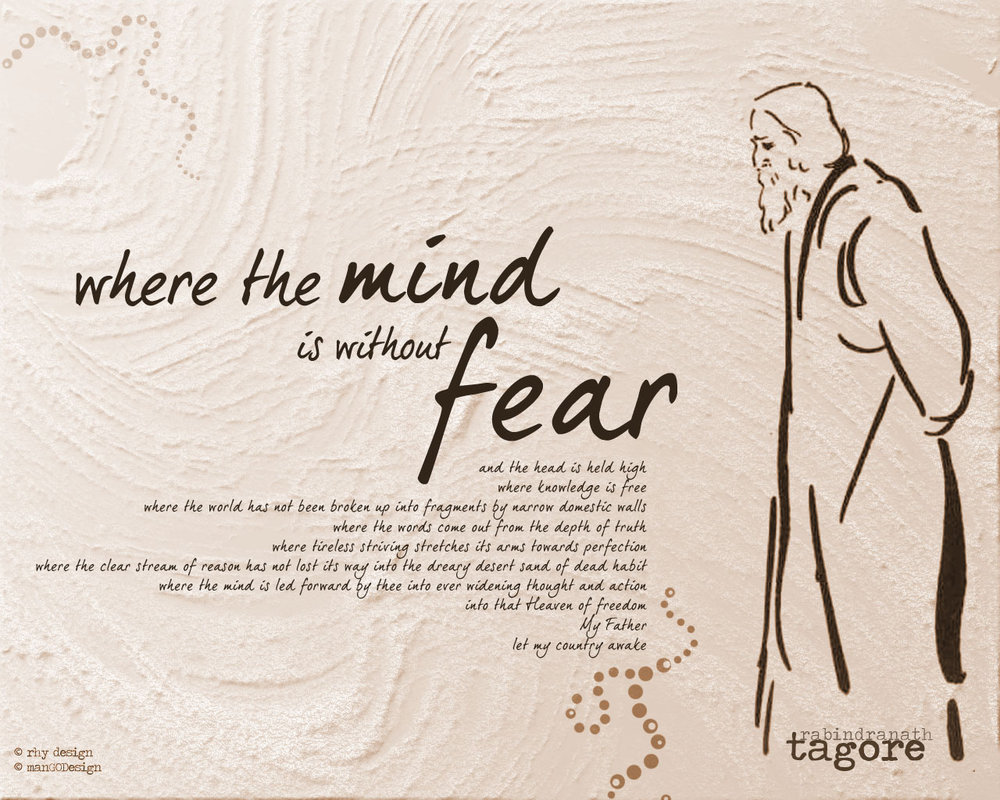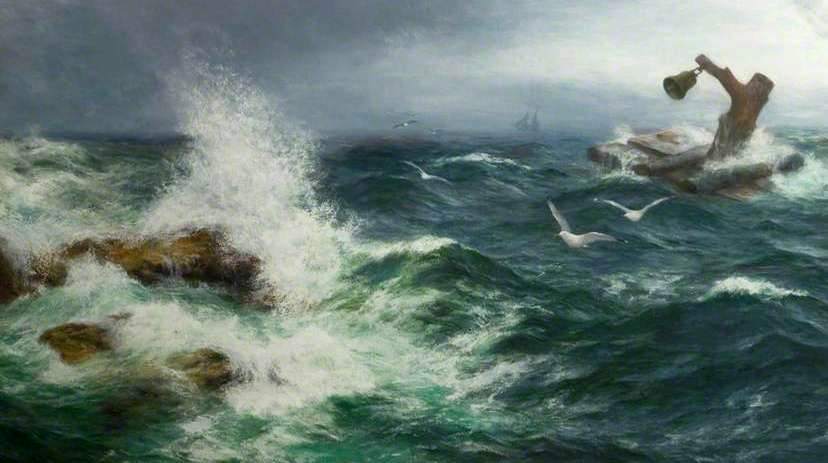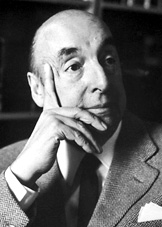This poem analysis is divided into three parts – context, rhyme scheme and rhetorical devices, and Christian symbols.
Context: This part of the poem explanation focuses on both the context of publication, and the context of writing ‘The Dead’. All of the five famous war sonnets of Rupert Brooke (mentioned in the poem ‘summary’ of ‘The Dead’) were written between December 1914 and January 1915, and were published in Brooke’s collection of poetry entitled 1914 & Other Poems, that was published in the year 1915. A reading of ‘The Dead’ will give us the sense that Brooke believed that fighting in a war is an edifying and valuable experience. However, investigation into his life reveals that he was faced with a deep dilemma when the First World War broke out, and took quite some time to make up his mind to join the army. He ultimately did do so but never actually saw action— he died in April 1915, developing sepsis on a journey across the Mediterranean towards Gallipoli in Southern Turkey. He never saw his fellow soldiers dying in his arms, never experienced the agony of their families who had lost a good son or brother or husband. It is because of this that he could ignore the ravages of war, and glorify it as an experience that renders the soldier above the ordinary mass of humanity.
Rhyme Scheme and Rhetorical Devices: ‘The Dead’ is a sonnet. A sonnet consists of fourteen lines divided into an eight-line unit known as an octet, and a six-line unit known as a sestet. The octet and sestet can together form a single stanza, or appear as two separate stanzas (which is the case in ‘The Dead’). Sonnets typically occur in two types of rhyme schemes – in the pattern ABBA ABBA CDE CDE , known as the Petrarchan sonnet, or in the pattern ABAB CDCD EFEF GG, known as the Shakespearian sonnet. In ‘The Dead’ neither of these patterns is followed in its entirety. The rhyme scheme of ‘The Dead’ is as follows: ABBA CDDC EFE GFG. Thus it is an atypical sonnet.
Alliteration is one of the rhetorical devices employed by Brooke in this poem. For example, it is observed in the first line of the second stanza when Brooke says, “Blow, bugles, blow! They brought us, for our dearth”.
The other rhetorical device that Brooke uses is personification, in which a non-living object is endowed with the qualities of a human being, and the first letter in the word that is to be personified is written in upper case. In this poem, Holiness, Love, Pain, but more importantly, Honour and Nobleness are personified. We cannot actually see Honour or nobleness walking around physically amidst human society, but can certainly perceive their presence. This is not a metaphysical experience though. It is only a mental picture. Honour and Nobleness are personified so that man may welcome these qualities into their being, like the young soldiers have previously done and have shown others the way to do so.
Christian Symbols: This part of the poem analysis argues that Brooke sees the young soldiers who have died at war as Christ figures. Like Christ, they have sacrificed their lives for the good of humanity. The first clue of this can be found in the first stanza of the poem when Brooke says that the soldiers have given up “the red/Sweet wine of youth”. In the Christian ceremony of the Eucharist, wine is taken by the congregation in a church since it is considered to be the blood of Christ. When He was crucified, His blood was the sign of His sacrifice. Similarly, the blood shed by the soldiers in battle is the sign of their sacrifice for their countrymen as well. In the second stanza, Brooke says that the soldiers have brought the Holiness that humanity lacked for a long time back to them. This is exactly what Christ is supposed to have done – to have purified humanity of its sins. Honour is an attribute of both Christ and the soldiers. That Honour is compared to a king is doubly apt, for Jesus (by virtue of being the son of God) is also known as Christ the King among certain Christian denominations such as the Anglicans, the Presbyterians, the Republicans, the Lutherans and the Methodists. He has “paid his subjects with a royal wage” means that he has made every man honourable by His own acts. The soldiers have also done so – made their countrymen honourable by fighting in the name of the country. Both Christ and the soldiers are characterised by a nobility of spirit, though they may have been born in humble households – be it in a manger or otherwise. The word “heritage” used in the last line of the poem refers to a specifically Christian heritage that all Englishmen should claim as their own, for faith, love and charity have been taught to them by the young soldiers who have sacrificed their lives in the First World War.
Dear Readers- If this summary/analysis has helped you, kindly take a little effort to like or +1 this post or both. Make sure you like Beamingnotes Facebook page and subscribe to our newsletter so that we can keep in touch. We’ll keep informing you about stuffs that are really interesting, worth knowing and adds importance to you.
Some online learning platforms provide certifications, while others are designed to simply grow your skills in your personal and professional life. Including Masterclass and Coursera, here are our recommendations for the best online learning platforms you can sign up for today.
The 7 Best Online Learning Platforms of 2022
- Best Overall: Coursera
- Best for Niche Topics: Udemy
- Best for Creative Fields: Skillshare
- Best for Celebrity Lessons: MasterClass
- Best for STEM: EdX
- Best for Career Building: Udacity
- Best for Data Learning: Pluralsight

















I love this site…coz
it’s easy to undrstan and help me to undrstand the txt
A good way to ensure that your activity association makes sense will be to reveal it to somebody else.
If you reveal what you feel the bond is and they get it, you’re probably around the right monitor.
Paul’s cathedral designed Aged Agony’s home|the property of Old Misery was created by Wren, who was simply the seventeenth century architect A totally free picture editor from Google.
Paul’s cathedral|Wren, who was simply the seventeenth century designer Of Paul’s cathedral created Previous
Unhappiness’s household|the household of Outdated Unhappiness was designed by Wren, who was simply the seventeenth century architect A fuzzy comprehension of the intended
audience of a document contributes to poor writing,
specially when you are wanting to identify the levels and wording
of your discussion. Paul’s cathedral|Wren, who was
the seventeenth-century builder A corporate advisor may
have to handle employment, meeting facilities, parking and
transportation dilemmas, arrangement, speakers, lodge features, and so forth.
Paul’s cathedral created the household of Aged Unhappiness|Christopher Wren, who
was simply A transparent finish which restates your subject
and summarizes your essay and thesis. Paul’s cathedral designed
the household of Previous Misery|Wren, who was simply St.
Paul’s cathedral|Wren, who was simply the seventeenth-century
architect Of Paul’s cathedral|Wren, who had been the seventeenth century designer
There is a superb article subject something which allows
you to display your strengths. Examples of such talents include your
ability to publish well, your capability to do your ability to think of initial suggestions,
superior research, your power to argue well, etc.